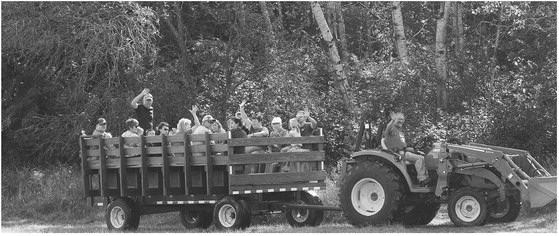Support efforts to develop biofuel industry in Wisconsin


Wood-powered jet airplanes may seem like something out of science fiction, but that is the goal of a company wanting to turn wood products into aviation fuel.
A group of state legislators, including Rep. Rob Summerfield of Bloomer, are calling for the state to approve the Forestry Revitalization Act. The bill would provide $210 million in state assistance to help attract a $1.5 billion plant in Hayward. In addition to the 150 jobs it would create in that community, the facility could have a massive impact throughout the northern part of the state, opening new markets for wood harvested in the state.
The timber industry has been a major player in the state’s economic health since the first settlers came to the region. Timber from Wisconsin’s forests helped build homes and cities throughout the Midwest. The state’s mills and factories continue to produce paper products and packaging, having Wisconsin’s logging industry reach expanding around the world.
Today sustainable forestry contributes to more than 64,000 jobs in Wisconsin with a direct economic impact of more than $26.9 billion per year, with another $8 billion in economic impact through value-added products.
Despite its long history of success, in more recent years the state’s logging industry has suffered significant blows, including the 2020 closure of a paper mill in Wisconsin Rapids which greatly impacted markets for timber in the state.
According to industry statistics, before the closure the state had been harvesting 1.2 million cords of wood. The state is now down to 839,000 cords harvested each year.
Once up to production levels, the proposed project would use about 440,000 cords of timber products each year to produce aviation fuel (a highly refined form of kerosene) and naphtha which is used as an industrial solvent and in the manufacture of plastics. The processes utilize traditionally lower-quality wood products including bark, branches, cutter shavings, tree tops, and slash and forestry processing residue. All of which increases utilization of harvested materials, increasing the efficient stewardship of forests and improving forest management.
As with any innovation, there is an economic incentive to make it happen. In this case, the European Union has mandated the use of biofuels in its aviation industry with requirements for a growing percentage each year up to 70% by 2050. These mandates will open a proverbial floodgate of demand at the international level.
“So there is going to be an increasing demand for this type of fuel, and we are right at the forefront here in Wisconsin,” said Sen. Mary Felzkowski, of Tomahawk, who is spear-heading the state funding package. She projected the demand for aviation biofuels as being more than a trillion gallons in the next 25 years.
Wisconsin leaders should move quickly to approve this economic development package and work to make the planned facility a reality. Wisconsin’s strength comes from the ability to put its resources to work. The proposed facility to turn wood products into aviation fuel is a bold vision that would provide a significant boost to the logging industry throughout northern Wisconsin.




